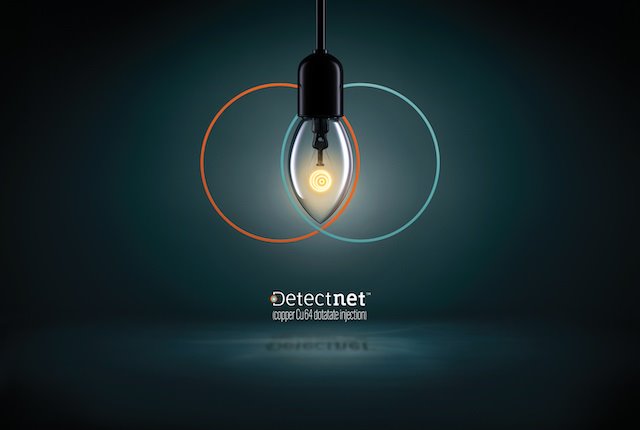
19th abril 2022
Curium Announces Significant Increase in Detectnet™ (copper Cu 64 dotatate injection) Production Capacity
———
Download as PDF: English
———
(St. Louis, MO – April 19, 2022) – Curium announced today that it will be increasing production capacity of Detectnet to accommodate the significant demand in the market. Curium will now be offering 50% more doses for patient use Monday-Friday beginning the week of May 1, 2022.
“We are incredibly pleased with the overwhelming response to Detectnet that has warranted an increase in production. Further, we are proud of the dedication of all the Curium employees who worked so diligently to support this effort. We now feel confident in our ability to service the entire adult neuroendocrine market, who may require a somatostatin receptor PET scan.” said Curium CEO of North America, Michael Patterson. “At Curium, we are focused on redefining the experience of cancer through our trusted legacy in nuclear medicine. Today’s announcement further demonstrates our commitment to the physicians and patients in the neuroendocrine cancer community.”
“Neuroendocrine cancer continues to be a priority focus for Curium,” said Michael Wessler, Senior Director of Marketing. “We are very pleased with this increase in commercial capacity and are excited Detectnet will be even more accessible. Having the high accuracy of Detectnet readily available to patients and their physicians can help determine the best treatment plan.”
About Detectnet
INDICATIONS AND USAGE
Detectnet is indicated for use with positron emission tomography (PET) for localization of somatostatin receptor positive neuroendocrine tumors (NETs) in adult patients.
IMPORTANT RISK INFORMATION
WARNINGS AND PRECAUTIONS
Radiation Risk
Diagnostic radiopharmaceuticals, including Detectnet, contribute to a patient’s overall long-term cumulative radiation exposure. Long-term cumulative radiation exposure is associated with an increased risk of cancer. Ensure safe handling and preparation procedures to protect patients and health care workers from unintentional radiation exposure. Advise patients to hydrate before and after administration and to void frequently after administration.
Hypersensitivity Reactions
Hypersensitivity reactions following administration of somatostatin receptor imaging agents predominantly consisted of cutaneous reactions such as rash and pruritis. Reactions reversed either spontaneously or with routine symptomatic management. Less frequently hypersensitivity reactions included angioedema or cases with features of anaphylaxis.
Risk for Image Misinterpretation
The uptake of copper Cu 64 dotatate reflects the level of somatostatin receptor density in NETs, however, uptake can also be seen in a variety of other tumors that also express somatostatin receptors. Increased uptake might also be seen in other non-cancerous pathologic conditions that express somatostatin receptors including thyroid disease or in subacute inflammation, or might occur as a normal physiologic variant (e.g. uncinate process of the pancreas).
A negative scan after the administration of Detectnet in patients who do not have a history of NET disease does not rule out disease.
ADVERSE REACTIONS
In clinical trials, adverse reactions occurred at a rate of < 2% and included nausea, vomiting and flushing. In published trials nausea immediately after injection was observed.
DRUG INTERACTIONS
Somatostatin Analogs
Non-radioactive somatostatin analogs and copper Cu 64 dotatate competitively bind to somatostatin receptors (SSTR2). Image patients just prior to dosing with somatostatin analogs. For patients on long-acting somatostatin analogs, a wash-out period of 28 days is recommended prior to imaging. For patients on short-acting somatostatin analogs, a washout period of 2 days is recommended prior to imaging.
USE IN SPECIFIC POPULATIONS
Pregnancy
All radiopharmaceuticals, including Detectnet, have the potential to cause fetal harm depending on the fetal stage of development and the magnitude of the radiation dose. Advise a pregnant woman of the potential risks of fetal exposure to radiation from administration of Detectnet.
Lactation
Advise a lactating woman to interrupt breastfeeding for 12 hours after Detectnet administration in order to minimize radiation exposure to a breastfed infant.
Pediatric use
The safety and effectiveness of Detectnet have not been established in pediatric patients.
Geriatric use
In general, dose selection for an elderly patient should be cautious, usually starting at the low end of the dosing range, reflecting the greater frequency of decreased hepatic, renal, or cardiac function, and of concomitant disease or other drug therapy.
OVERDOSAGE
In the event of a radiation overdose, the absorbed dose to the patient should be reduced where possible by increasing the elimination of the radionuclide from the body by reinforced hydration and frequent bladder voiding. A diuretic might also be considered.
Please see Full prescribing information by clicking here.
About Curium
Curium is the world’s largest nuclear medicine company. We develop, manufacture and distribute world-class radiopharmaceutical products to help patients around the globe. Our proven heritage combined with a pioneering approach are the hallmarks to deliver innovation, excellence and unparalleled service.
With manufacturing facilities across Europe and the United States, Curium delivers SPECT, PET and therapeutic radiopharmaceutical solutions for life-threatening diseases to over 14 million patients annually. The name ‘Curium’ honors the legacy of pioneering radioactive researchers Marie and Pierre Curie, after whom the radioactive element curium was named and emphasizes our focus on nuclear medicine. To learn more, visit www.curiumpharma.com. For more information about this press release, please contact Sandy Borgschulte, media contact for Curium: Sandy.Borgschulte@curiumpharma.com.
About Neuroendocrine Tumors
Neuroendocrine tumors (NETs) are a heterogeneous group of rare neoplasms that originate from neuroendocrine cells. These neoplasms occur mostly in the gastrointestinal tract, pancreas and liver, but can also occur in other tissues including lung, thymus and other uncommon sites such as cervix, heart and prostate. Most NETs strongly express somatostatin receptors (SSTRs).